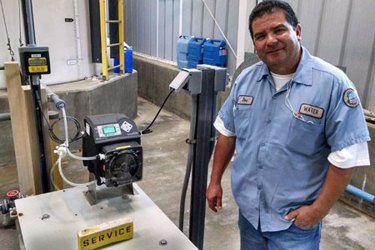Successful Water Treatment And Reduced Costs

Application:
The Bellevue Water Treatment Plant, located in Bellevue, Ohio, serves approximately 3,500 customers and operates an average of 16 hours per day. The plant treats surface water from four reservoirs and two separate water locations. The amount of water being treated typically falls in the range of 1.8 million gallons during summer, declining to approximately 1.2 million gallons during winter.
The Bellevue Plant’s four reservoirs can store a billion gallons of water. In order to meet or exceed the exacting requirements set by the EPA, the treatment process uses a variety of chemicals, including: potassium permanganate to treat for organics and algae, ferric chloride to coagulate and settle particle, lime to soften and treat for organics, sodium hydroxide to soften and lower the noncarbonated hardness, powder activate carbon to control taste and odors, liquid CO2 to lower the pH, phosphate for corrosion control for the distribution system, chlorine for disinfection, and fluoride for dental protection (as mandated by the state).
Get unlimited access to:
Enter your credentials below to log in. Not yet a member of Water Online? Subscribe today.
